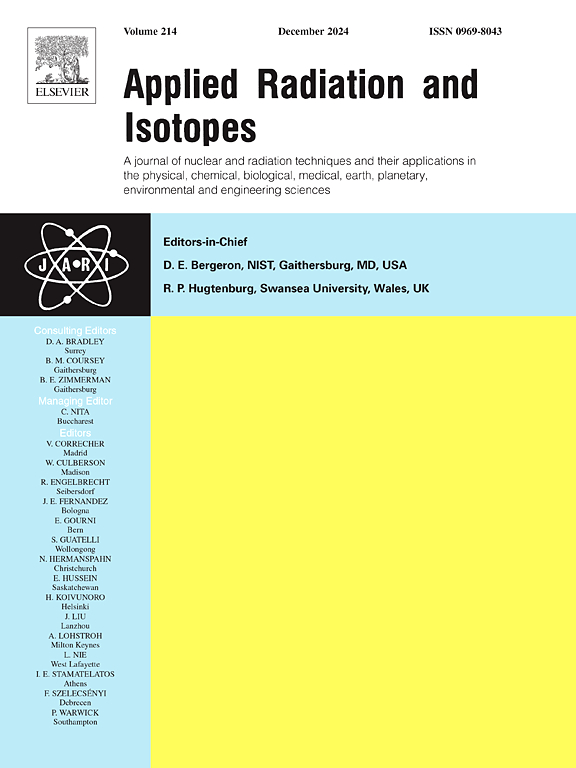FECSG-ML:利用机器学习生成核反应截面的特征工程。
IF 1.6
3区 工程技术
Q3 CHEMISTRY, INORGANIC & NUCLEAR
引用次数: 0
摘要
在核科学领域,获取和利用核数据(包括核反应数据、核结构信息和放射性衰变数据)至关重要。中子诱发的核反应,特别是核截面数据,对反应堆设计等各种应用至关重要。EXFOR 数据库是储存核反应实验测量信息和数据的唯一国际资料库。然而,实验测量数据通常很少,存在差异甚至错误,需要人工评估。这一过程容易产生偏差和重大不确定性。为了应对这些挑战,本研究提出了一个新颖的框架--利用机器学习生成核反应截面的特征工程(FECSG-ML),该框架采用机器学习方法生成核截面数据,可替代核数据库评估。鉴于 EXFOR 数据库的规模有限,仅根据 EXFOR 数据训练模型可能会导致拟合不足。因此,建议的方法利用迁移学习,首先使用ENDF/B-VIII.0 数据集对模型进行预训练,然后使用 EXFOR 数据库对其进行微调。在有真实数据的情况下,这种方法可确保高准确性,而在缺乏真实数据的情况下,则可学习评估数据集的特征。此外,还采用机器学习技术将离散的核截面数据转换为连续格式,以适应各种同位素和预测多组截面数据。该框架集成了各种机器学习方法,并利用集合学习进行结果优化。实验结果表明,FECSG-ML 模型生成的回归曲线与 EXFOR 数据点非常吻合,优于 ENDF/B-VIII.0 评估数据库。此外,FECSG-ML 模型生成的核截面数据被应用于 OpenMC 蒙特卡罗模拟程序,以模拟针形燃料组件和 CANDU 反应堆,从而证实了该模型的有效性。这项研究强调了准确可靠的核截面数据的重要性,并提供了一种替代核数据库评估的方法。本文章由计算机程序翻译,如有差异,请以英文原文为准。
FECSG-ML: Feature Engineering for Nuclear Reaction Cross Sections Generation Using Machine Learning
In the field of nuclear science, obtaining and utilizing nuclear data, including nuclear reaction data, nuclear structure information, and radioactive decay data, is crucial. Neutron-induced nuclear reactions, particularly nuclear cross sections data, are essential for various applications, including reactor design. The EXFOR database is the only international repository for storing nuclear reaction experimental measurement information and data. However, experimental measurement data are often scarce, subject to discrepancies, or even errors, requiring human evaluation. This process can be prone to biases and significant uncertainties. To address these challenges, this study proposes a novel framework, Feature Engineering for Nuclear Reaction Cross Section Generation using Machine Learning (FECSG-ML), which employs machine learning methods to generate nuclear cross sections data, serving as a substitute for evaluating nuclear databases. Given the limited size of the EXFOR database, training a model solely on EXFOR data could lead to underfitting. Therefore, the proposed approach utilizes transfer learning, initially pre-training the model using the ENDF/B-VIII.0 dataset and subsequently fine-tuning it with the EXFOR database. This approach ensures high accuracy where real data are available and enables the learning of characteristics of the evaluation dataset where real data are lacking. Moreover, machine learning techniques are employed to transform discrete nuclear cross sections data into a continuous format, accommodating various isotopes and predicting multiple sets of cross sections data. The framework integrates various machine learning methods and utilizes ensemble learning for result optimization. Experimental results demonstrate that the regression curves generated by the FECSG-ML model align well with EXFOR data points, outperforming the ENDF/B-VIII.0 evaluation database. Furthermore, the nuclear cross sections data generated by the FECSG-ML model are applied in the OpenMC Monte Carlo simulation program to simulate pin fuel assemblies and CANDU reactors, confirming the effectiveness of the model. This study underscores the importance of accurate and reliable nuclear cross sections data and provides a method for substituting the evaluation of nuclear databases.
求助全文
通过发布文献求助,成功后即可免费获取论文全文。
去求助
来源期刊

Applied Radiation and Isotopes
工程技术-核科学技术
CiteScore
3.00
自引率
12.50%
发文量
406
审稿时长
13.5 months
期刊介绍:
Applied Radiation and Isotopes provides a high quality medium for the publication of substantial, original and scientific and technological papers on the development and peaceful application of nuclear, radiation and radionuclide techniques in chemistry, physics, biochemistry, biology, medicine, security, engineering and in the earth, planetary and environmental sciences, all including dosimetry. Nuclear techniques are defined in the broadest sense and both experimental and theoretical papers are welcome. They include the development and use of α- and β-particles, X-rays and γ-rays, neutrons and other nuclear particles and radiations from all sources, including radionuclides, synchrotron sources, cyclotrons and reactors and from the natural environment.
The journal aims to publish papers with significance to an international audience, containing substantial novelty and scientific impact. The Editors reserve the rights to reject, with or without external review, papers that do not meet these criteria.
Papers dealing with radiation processing, i.e., where radiation is used to bring about a biological, chemical or physical change in a material, should be directed to our sister journal Radiation Physics and Chemistry.
 求助内容:
求助内容: 应助结果提醒方式:
应助结果提醒方式:


